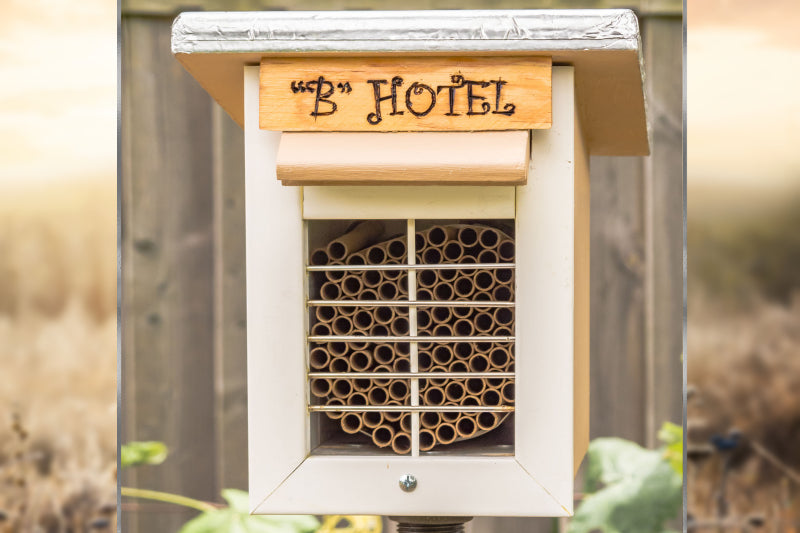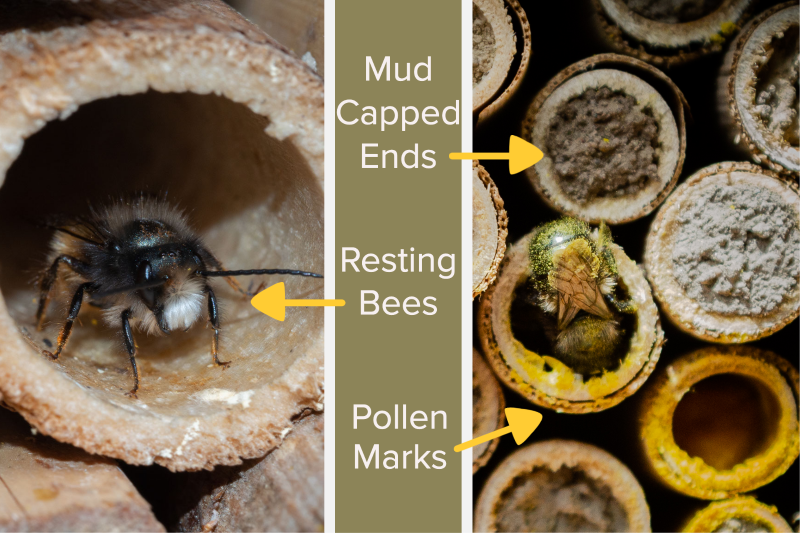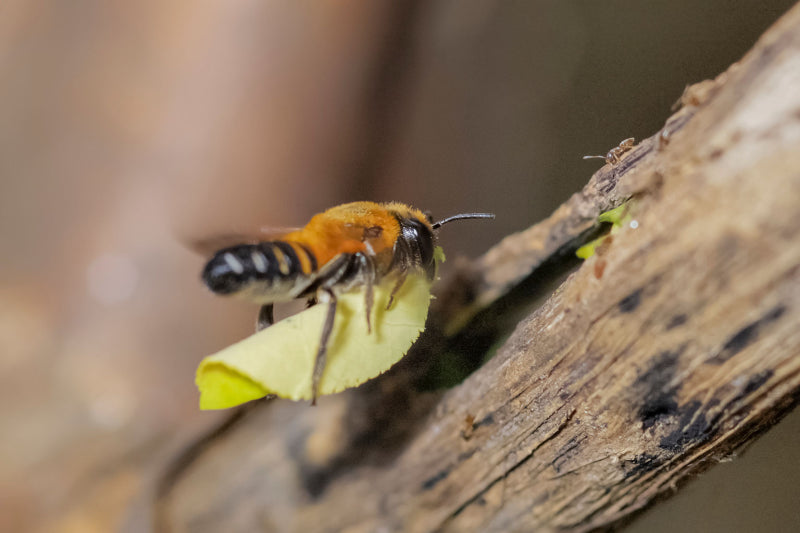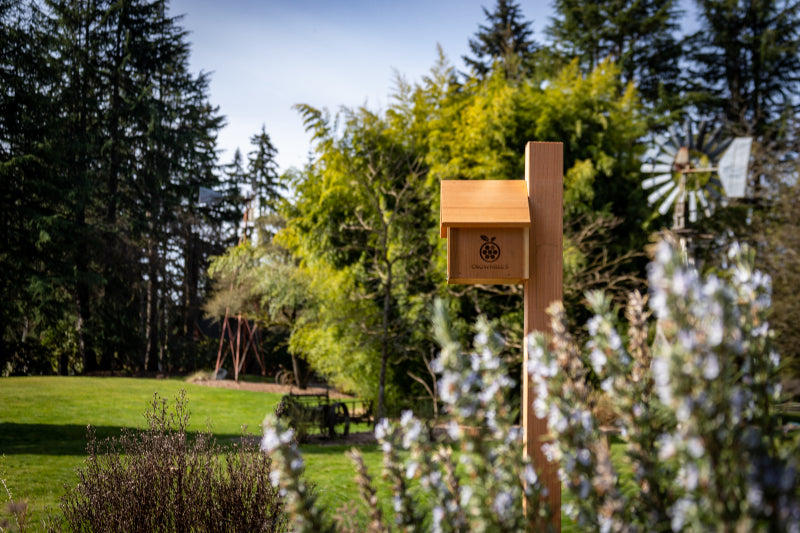"Why aren't my bees nesting?" is one of the most common questions we receive from our bee raisers.
We definitely understand how frustrating it can be to take the time to create safe nesting habitats for cavity-nesting bees only to have them fly off and nest somewhere else. We've been in this situation ourselves from time to time!
First a question— Have you signed up for BeeMail? It's the best way to receive seasonal tips and tricks to help you be as successful as possible and troubleshoot a variety of solitary bee related issues!
Next, please be patient. Emergence is temperature-dependent and varies from region to region and year to year. Once bees do emerge, it can take up to two weeks before you'll see bee activity at your bee house. Females have to mate, find a safe place to nest, and find and collect pollen, nectar, and clay-rich mud or leaves to build their nests. Bees also start their nests at the very back of the nesting cavity and can be hard to see when working in this area.
Pro Tip: You can take a flashlight and peek inside your nesting materials at night. Females sleep facing out in the nesting materials to protect their eggs. If they're inside, you'll see their little faces peering back at you! Just don't do this too often, or they may fly off due to being disturbed too often.
Now, before we jump into the Top 5 Reasons Bees Aren't Nesting in Your Bee House, it's important to remember that bees are wild animals, and we can't (and shouldn't) expect them to nest in our bee houses just because we want them to. Sometimes we can do everything right, and they will still decide to nest elsewhere for reasons unknown. It's entirely likely they are nesting somewhere in your yard, just not in your bee house.
Pro Tip: Look for signs that bees are nesting around your yard and garden! Check hollowed-out plant stems, holes in decks or siding, between bricks in sidewalks, and cracks in raised beds or foundations. Don't worry if mason or leafcutter bees take residence in your siding or deck; they use existing holes and will not cause any structural damage.
1. Females will sometimes rest in or near their nesting cavities in the early morning or around dusk
2. Mud-capped ends
3. Yellow pollen marks around nesting cavities







